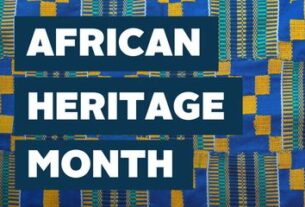**** DND Media Release
Canadian soldier of the First World War identified

The Department of National Defence and the Canadian Armed Forces have confirmed the identification of remains recovered during a munitions clearing process north of Lens, France, as being those of Sergeant Richard Musgrave, a Canadian soldier of the First World War. The identity was confirmed through historical, genealogical, anthropological, archaeological and DNA analysis.
Richard Musgrave was born in Blackrigg, Scotland in 1886. He worked as a teamster in Calgary before enlisting at the age of 28 with the 56th Overseas Battalion of the Canadian Expeditionary Force (CEF) on April 30, 1915. After sailing from Montreal and training in England, Private Musgrave travelled to France in February 1916, now as a member of the 7th Infantry Battalion (British Columbia), CEF. He achieved the rank of sergeant in March 1917, was wounded in April but remained on duty, and was awarded the Military Medal for bravery in July of that year.
On August 15, 1917, Sergeant Musgrave fought with the 7th Battalion during the first day of the Battle of Hill 70 near Lens, France. He was reported missing that day and was presumed to have died as part of the battle. He was 30 years old. The Battle of Hill 70 continued until August 25, 1917, with a heavy toll of more than 10,000 Canadians killed, wounded, or missing. More than 140 men of the 7th Battalion were killed, 118 of them missing and never found.
The Canadian Armed Forces has notified the family of Sergeant Richard Musgrave’s identification and is providing them with ongoing support. Sergeant Musgrave will be buried at the earliest opportunity in the Commonwealth War Graves Commission’s Loos British Cemetery in Loos-en-Gohelle, France.
The Canadian Armed Forces Casualty Identification Program, within the Directorate of History and Heritage, identifies unknown Canadian service members when their remains are recovered. The program also identifies service members previously buried as unknown soldiers when there is sufficient evidence to confirm the identification.
Quotes
“My thoughts today are with the family of Sergeant Musgrave, a Canadian soldier who paid the ultimate sacrifice during the First World War. The Canadian Armed Forces is committed to providing service members with a final resting place, regardless of how many years have passed. The debt that Canada owes to him for his courageous service and sacrifice can never be repaid. We will forever owe him, and all fallen Canadian soldiers and their families, our deepest gratitude. Lest we forget.”
The Honourable Anita Anand, Minister of National Defence
“Canada will never forget the dedicated soldiers who served our country. More than 100 years have passed since Sergeant Musgrave was killed during the Battle of Hill 70 and, still, we make it our duty to remember and honour him and his comrades. Though his name is chiseled into the white stone of the Vimy Memorial, identifying his remains gives his family and his country the opportunity to contemplate his courage and sacrifice in service to Canada.”
The Honourable Lawrence MacAulay, Minister of Veterans Affairs and Associate Minister of National Defence
Quick Facts
- Richard Musgrave was born in Blackrigg, Scotland in 1886. His only listed parent was Rebecca Musgrave, née Dearden. Their family included Richard’s sister Jeannie (Jane) Musgrave. He worked as a teamster in Calgary before enlisting at the age of 28 with the 56th Overseas Battalion of the Canadian Expeditionary Force (CEF). As a member of the 7th Infantry Battalion (British Columbia), CEF, he was reported missing on August 15, 1917, and was presumed to have died as part of the Battle of Hill 70 near Lens, France. Sergeant Musgrave was 30 years old.
- Sergeant Musgraveis commemorated on theCanadian National Vimy Memorial, erected in memory of Canadian soldiers killed in France during the First World War who have no known grave.
- On July 11, 2017, skeletal human remains were recovered during a munitions clearing process north of Lens, France. Commonwealth War Graves Commission staff recovered the remains and several artifacts, including a Military Medal ribbon and a whistle.
- Through historical, genealogical, anthropological, archaeological, and DNA analysis, with the assistance of the Canadian Forces Forensic Odontology Response Team, and the Canadian Museum of History, the Casualty Identification Review Board was able to confirm the identity of the remains as those of Sergeant Richard Musgrave in October 2021.
The Commonwealth War Graves Commission commemorates the 1.7 million Commonwealth servicemen and women who died during the two world wars. Using an extensive archive, the Commission works with their partners to recover, investigate, and identify those with no known grave to give them the dignity of burial and the commemoration they deserve.



